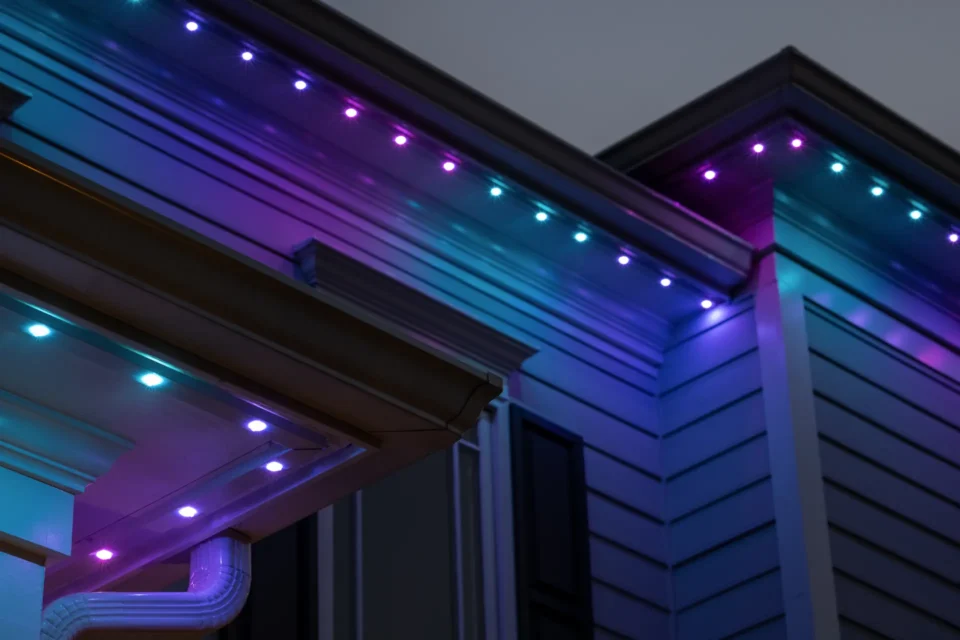It may seem like a simple thing, but those parking lot lines are influencing way more than you think. They don’t just tell you where to park—they actually guide how we behave. Believe it or not, the way spaces are marked can affect everything from how carefully we park to how people navigate crowds.
It’s all about psychology. The lines, angles, and spacing of a parking lot can trick our brains into feeling more or less stressed. Wide spaces make us feel relaxed, while tightly packed lines can trigger anxiety or impatience. In fact, parking lot striping is so much more than just functional design—it’s a subtle tool shaping how we interact with the space around us.
Next time you pull into a lot, pay attention to how the lines make you feel. They’re quietly guiding your actions, helping you decide how fast to drive, whether to park perfectly or take that extra wide space. Striping isn’t just for cars—it’s shaping our behavior in ways we don’t always notice.
How Do Parking Lot Lines Influence the Way Drivers Navigate Space?
Parking lot lines serve as silent conductors of a complex choreography. Without them, chaos would reign—cars would park haphazardly, aisles would be clogged, and collisions would spike. But how exactly do these lines shape the way drivers move?
- Define Personal Territory: Each stripe outlines a “personal space” for a vehicle, reducing uncertainty and conflict between drivers. People naturally respect these boundaries, minimizing the risk of collisions or disputes.
- Guide Entry and Exit Paths: Lines not only mark spaces but also influence how drivers approach, angle, and leave their spots. Angled stripes encourage one-way flow, while perpendicular stripes offer more straightforward parking but can cause more complex maneuvering.
- Facilitate Spatial Awareness: Clear, bright striping helps drivers judge distances, reducing stress and hesitation during tight maneuvers.
- Reduce Decision Fatigue: When spaces are clearly marked and predictable, drivers spend less cognitive energy figuring out where to park, improving overall flow.
- Encourage Efficient Use of Space: Properly spaced lines optimize capacity while balancing ease of parking and safety.
In essence, parking lines shape a mental map in drivers’ minds, guiding their movements like invisible lanes and personal bubbles, all contributing to safer, smoother traffic in what could otherwise be a chaotic environment.
Why Do Symmetrical Parking Stripes Affect Decision Making in Drivers?
Symmetry is not just pleasing to the eye; it’s deeply wired into our brains. When it comes to parking lot striping, symmetrical layouts play a key role in how drivers decide where to park and how comfortable they feel doing so.
- Visual Harmony Creates Comfort: Symmetrical stripes form predictable patterns, which our brains process easily, reducing anxiety and indecision.
- Predictability Aids Choice: When parking spaces are uniformly sized and evenly spaced, drivers can quickly identify available spots and evaluate them without hesitation.
- Encourages Fair Use: Symmetry implies fairness—no space looks favored or disadvantaged—so drivers trust the layout and are less likely to argue or stress.
- Boosts Confidence: Symmetrical environments tend to make drivers feel in control, decreasing the likelihood of errors or accidents.
- Facilitates Flow: Balanced layouts promote even distribution of cars, reducing congestion hotspots.
In contrast, asymmetrical or irregular striping can cause confusion, frustration, or missed opportunities for parking. Our natural preference for balance and order makes symmetrical stripes more than a design choice—they are psychological anchors.
Can the Design of Parking Lines Change Pedestrian Movement Patterns?
Parking lots aren’t just about cars—they’re shared spaces where pedestrians and vehicles must coexist safely. The design of parking lot striping plays a surprisingly important role in guiding pedestrian behavior and ensuring safety.
- Crosswalk Integration: Strategically placed striping can highlight safe pedestrian crossing zones, encouraging walkers to use designated paths instead of darting unpredictably between cars.
- Traffic Calming Effects: Narrower parking lanes or angled stripes can slow down vehicle speeds, making pedestrian movement safer.
- Natural Flow Creation: Lines can subtly funnel pedestrians toward sidewalks, entrances, or gathering areas by creating visual corridors.
- Visibility Enhancement: Clear striping improves sightlines, helping drivers anticipate pedestrian movement.
- Reducing Conflict Zones: Thoughtful layout can minimize interactions between pedestrian routes and vehicle turning areas.
The way parking lines are designed influences where and how pedestrians move—either promoting safe, organized foot traffic or contributing to hazardous, chaotic crossings.
What Psychological Cues Do People Respond To In Parking Layouts
Beyond lines and symmetry, various psychological signals embedded in parking lot designs impact user experience:
- Color and Contrast: High-contrast striping grabs attention, helping drivers and pedestrians quickly interpret space boundaries.
- Lighting and Shadow: Well-lit lots with clear line visibility reduce anxiety and enhance safety perception.
- Spacing and Size: Appropriately sized spots signal consideration for vehicle types and ease of maneuvering, reducing stress.
- Signage and Symbols: Clear icons, arrows, and directional signs communicate rules and expectations without overwhelming text.
- Consistency: Uniform patterns build trust and reduce confusion, making navigation feel effortless.
People subconsciously absorb and respond to these cues, shaping their behavior and emotional comfort in the parking environment.
The Bigger Picture: Designing Parking Lots for Human Behavior
Understanding the psychology behind parking lot lines and layouts offers powerful insights for architects, city planners, and businesses aiming to create safer, more efficient, and user-friendly spaces.
- Prioritize Clear Visual Communication: Crisp, symmetrical striping with thoughtful pedestrian integration encourages safe and confident use.
- Balance Capacity with Comfort: While maximizing spaces is important, it shouldn’t come at the expense of ease or safety.
- Consider Multi-Modal Users: Accommodate pedestrians, cyclists, and drivers to foster harmony.
- Use Psychological Insights: Leverage symmetry, color, and cues to reduce stress and improve flow.
After all, a parking lot is more than a place to stash cars—it’s a carefully orchestrated environment designed around human behavior and psychology.




